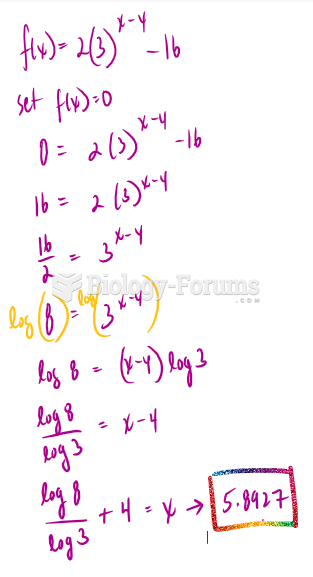|
|
|
Did you know?
The longest a person has survived after a heart transplant is 24 years.
Did you know?
The average office desk has 400 times more bacteria on it than a toilet.
Did you know?
In 2012, nearly 24 milliion Americans, aged 12 and older, had abused an illicit drug, according to the National Institute on Drug Abuse (NIDA).
Did you know?
Asthma cases in Americans are about 75% higher today than they were in 1980.
Did you know?
The B-complex vitamins and vitamin C are not stored in the body and must be replaced each day.







